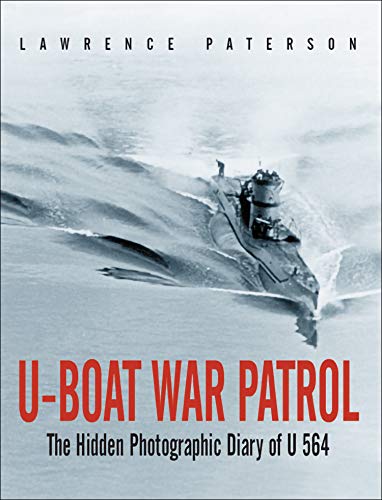
Second U-boat Flotilla
by Lawrence Paterson
Popularity
4.14 / 5
* A book's popularity is determined by how it compares to all other books on this website.
Where to buy?
Buy from Amazon* If you buy this book through the link above, we may receive a small commission at no extra cost to you.
Second U-boat Flotilla by Lawrence Paterson
Details
War:
World War II
Perspective:
Submarines
Military Unit:
Kriegsmarine
True Story:
Yes
Biography:
No
Region:
Europe
Page Count:
312
Published Date:
2003
ISBN13:
9780850529173
Description
Brief Summary
"Second U-Boat Flotilla" by Lawrence Paterson offers a detailed and compelling narrative of one of Germany's most formidable naval units during World War II. The book begins with the tragic and significant event of Fritz-Julius Lemp's sinking of the Athenia, marking the commencement of Germany's U-boat warfare against England. Over the course of six years, the Second U-Boat Flotilla played a pivotal role in naval operations, extending its impact from the Atlantic to the Indian Oceans. Through exhaustive research, including war diaries and personal accounts from veterans, Paterson presents the dramatic rise and fall of this naval unit, underscoring its strategic importance and the intense challenges it faced in open waters.
Main Themes and Topics
The core themes of "Second U-Boat Flotilla" revolve around naval strategy, the psychological and physical rigors of submarine warfare, and the leadership styles of notable commanders such as Albrecht Achilles, Werner Hartenstein, and Reinhard Hardegen. Paterson delves into the intricacies of submarine tactics and the relentless pressure faced by the crews in executing Karl Donitz's aggressive military doctrine. The book also reflects on the broader implications of warfare, tracing the operational successes and eventual decline of the flotilla within the context of World War II's shifting tides.
Writing Style and Tone
Paterson's writing is characterized by meticulous attention to detail and an authoritative tone well-suited to historical analysis. His ability to weave together technical aspects of naval operations with personal recollections from those who lived through the events results in a rich tapestry of narratives. This combination of factual rigor and human interest makes the book accessible to both military history enthusiasts and general readers. The diligent research and structured presentation foster an immersive reading experience, transporting readers to the high-stakes world of U-boat warfare.
Criticism
While "Second U-Boat Flotilla" is lauded for its comprehensive research and engaging narrative, some readers might find the level of detail overwhelming, particularly those less familiar with naval terminology or World War II history. Additionally, the focus on the operational successes of the flotilla may overshadow discussions on the moral and ethical implications of submarine warfare, which could have enriched the historical analysis. However, these criticisms do not detract significantly from the overall quality and impact of the book.









